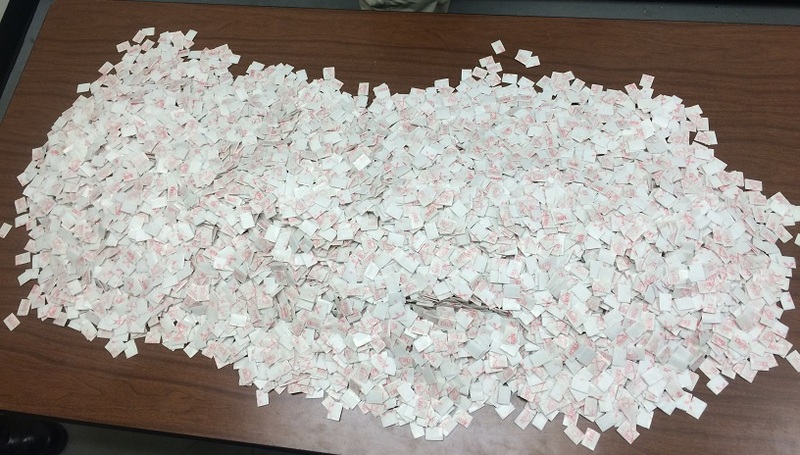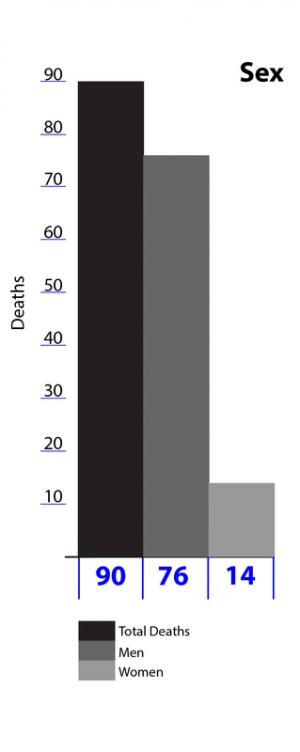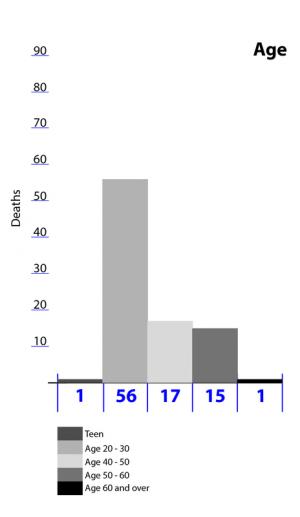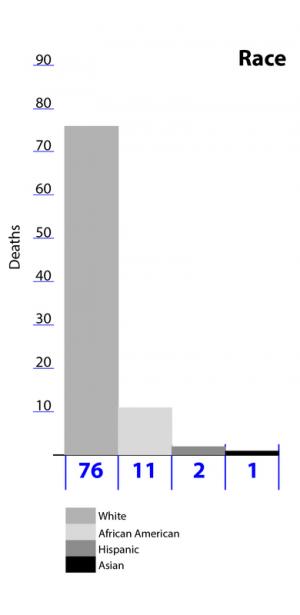Fentanyl-related deaths in Delaware have more than doubled in 2016 with 90 confirmed cases, 15 in Sussex County.
Sussex County's 15 deaths represent about 35 percent of the state's total, almost equaling 17 deaths recorded in New Castle County – a county with more than twice the number of people as Sussex County.
Kent County had 10 deaths.
“The dramatic increase in overdose deaths related to fentanyl is heartbreaking,” said Rita Landgraf, secretary of the Department of Health and Social Services. “We urge people to seek treatment for addiction.”
In Sussex County, state officials are launching a new education and outreach campaign targeting the Seaford community, said Emily Knearl, spokeswoman for the Division of Public Health. Another goal is to increase treatment options for downstate, she said.
The Centers for Disease Control and Prevention reported synthetic opioids were responsible for the largest increase in overdose deaths nationwide, from 2013 to 2014, when the rate nearly doubled from 1 death per 100,000 people to 1.8 deaths.
In Delaware, the number of fentanyl-related deaths soared by 180 percent over the three-year period, from 15 deaths in 2012 to 42 deaths in 2015. So far in 2016, Delaware’s 90 fentanyl-related deaths are a 114 percent increase over 2015.
Among the 90 deaths, a striking 76 were men while 14 were women.
In terms of race, 76 deaths were white, 11 were African-American, two were Hispanic and one was Asian, with 56 of those who died in their 20s and 30s; 17 in their 40s; and 15 in their 50s. One fentanyl death occurred among teenagers, and one person was in their 60s.
“One use of any drug can be deadly, but with fentanyl, the risk, too often, is tragically greater,” Landgraf said.
DEA warns overdose deaths exceed car crash fatalities
Delaware's latest statistics follow a November report from the Drug Enforcement Agency, which found deaths from drug overdose exceeds deaths from motor vehicles and firearms. Using 2013 data – the latest available – more than 46,000 people in the United States died from a drug overdose and more than half of those were caused by prescription painkillers and heroin, the DEA states.
Mexican transnational criminal organizations are primary suppliers of heroin, cocaine, methamphetamine and marijuana, the DEA states. “Here in the U.S., affiliated and violent gangs are a significant threat to the safety and security of our communities. They profit by buying drugs from regional Mexican criminal affiliates, and then supply American communities with these dangerous drugs,” the DEA states.
The report found fentanyl – a synthetic opioid 25 to 40 times more potent than heroin – has caused more than 700 deaths in the United States between late 2013 and early 2015. Fentanyl is sometimes added to batches of heroin or sold by itself.
Landgraf said drug dealers sell fentanyl in a variety of ways: a white powder form to users who assume they are buying heroin; by lacing fentanyl with cocaine or heroin; or pressing fentanyl into pills and passing them off as OxyContin.
She urges individuals in active substance use to call DHSS’ 24/7 Crisis Services Helpline to be connected to addiction treatment options. In Sussex and Kent counties, the number is 1-800-345-6785. In New Castle County, the number is 1-800-652-2929.
Melissa Steele is a staff writer covering the state Legislature, government and police. Her newspaper career spans more than 30 years and includes working for the Delaware State News, Burlington County Times, The News Journal, Dover Post and Milford Beacon before coming to the Cape Gazette in 2012. Her work has received numerous awards, most notably a Pulitzer Prize-adjudicated investigative piece, and a runner-up for the MDDC James S. Keat Freedom of Information Award.

























































